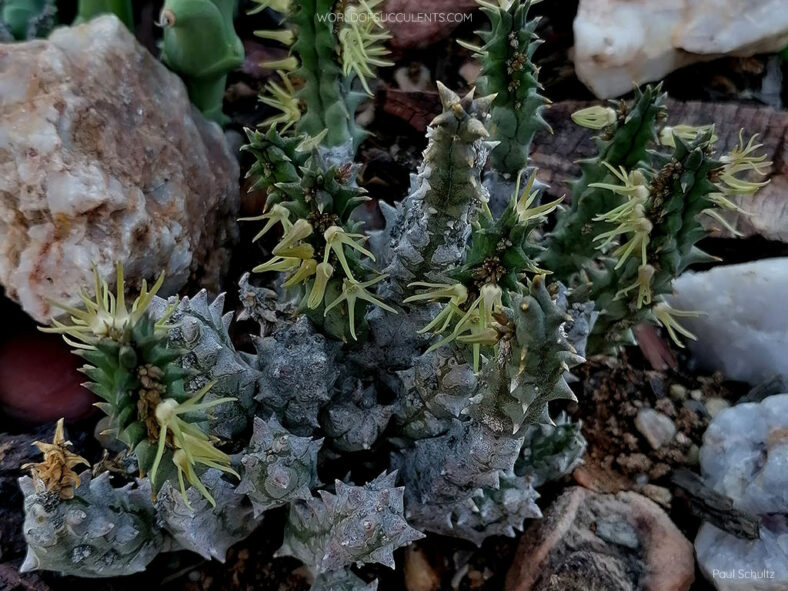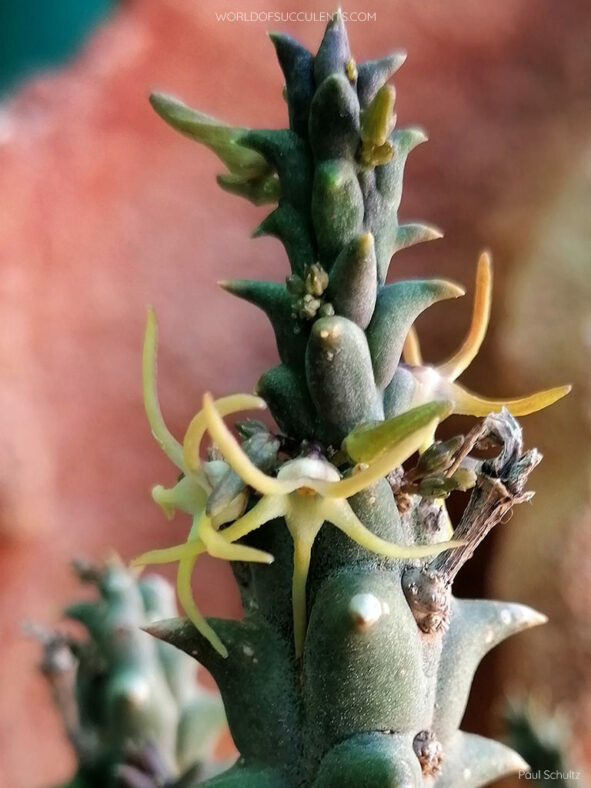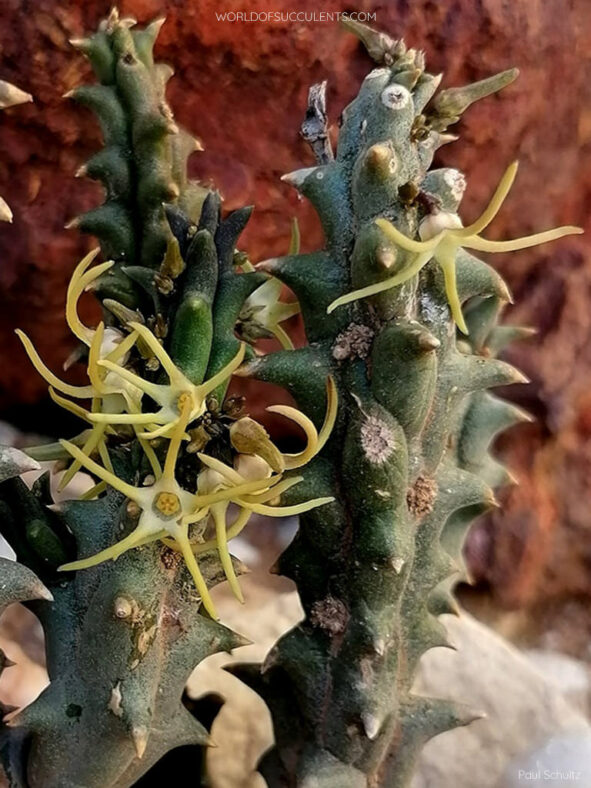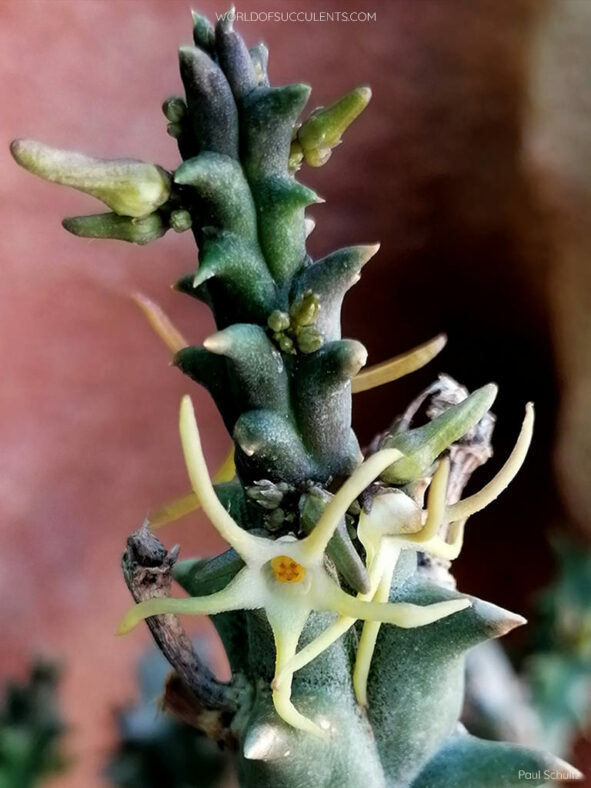Quaqua incarnata subsp. tentaculata is a beautiful small succulent with flowers that feature five spreading corolla lobes resembling the tentacles of an octopus.
Scientific Name
Quaqua incarnata subsp. tentaculata (Bruyns) Bruyns
Synonym(s)
Ceropegia incarnata subsp. tentaculata, Quaqua incarnata var. tentaculata, Quaqua tentaculata
Scientific Classification
Family: Apocynaceae
Subfamily: Asclepiadoideae
Tribe: Ceropegieae
Subtribe: Stapeliinae
Genus: Quaqua
Etymology
The subspecific epithet "tentaculata (pronounced ten-tak-yoo-LAY-tuh) means "tentacled; having tentacles" and refers to the long and slender corolla lobes.
Origin
Quaqua incarnata subsp. tentaculata is native to South Africa. It occurs in Knersvlakte, a region of hilly terrain covered with quartz gravel in Namaqualand in the northwest corner of the Western Cape province.
Description
Quaqua incarnata subsp. tentaculata is a small, clump-forming succulent with greyish-green to purplish-green stems with conical tubercles joined near the bases into usually four angles along the stem. The stems are decumbent and can grow up to 12 inches (30 cm) long and 1.3 inches (3.2 cm) thick. The tubercles are tipped with a sharp yellow tooth and can measure up to 0.25 inches (0.6 cm) long.
During the fall, Quaqua incarnata subsp. tentaculata produces inflorescences with 4 to 10 flowers that simultaneously open towards the stem tips. The corolla is white or cream to pale yellow, whitish in the tube and around the bases of narrow, spreading lobes. The corona is yellow.

How to Grow and Care for Quaqua incarnata subsp. tentaculata
Light: Quaqua incarnata subsp. tentaculata prefers full sun but will benefit from light shade during the hottest summer days. Indoors, place the plant near the brightest window of your home because it will stretch if it does not receive enough sunlight. Avoid abruptly moving a plant adapted to lower light levels to full sun to prevent sunburn.
Soil: You can use a commercial potting soil mix for succulents or prepare your own with 50 to 70 % mineral grit, such as coarse sand, pumice, or perlite.
Temperature: The plant thrives in warm outdoor environments with low to moderate humidity. It does not like winter cold and should remain fairly dry and warm during its dormancy. Quaqua incarnata subsp. tentaculata grows best in USDA Plant Hardiness Zones 11a to 11b, with average minimum winter temperatures ranging from 40 to 50 °F (4.4 to 10 °C).
Watering: It has typical watering needs for a succulent. During the growing season, from spring to fall, water the plant thoroughly and allow the soil to dry between waterings. When it goes dormant in winter, it needs almost no water, about once a month.
Fertilizing: In order to keep the plant healthy and thriving, fertilizing is a good idea. Feed it with water-soluble fertilizer diluted to half the recommended strength, but only when the plant is actively growing.
Repotting: Repot Quaqua incarnata subsp. tentaculata in spring, just before the growing season. It has shallow roots and does not require too much soil to grow. Always pick a container with drainage holes.
Propagation: The best way to propagate this succulent is by stem cuttings. To ensure good rooting, take cuttings during the growing season. The plant is also easy to start from seeds in spring.
Learn more at How to Grow and Care for Stapeliads.
Toxicity of Quaqua incarnata subsp. tentaculata
Quaqua incarnata subsp. tentaculata has no toxic effects reported, so it is safe for growing around kids and pets.
Links
- Back to genus Quaqua
- Succupedia: Browse succulents by Scientific Name, Common Name, Genus, Family, USDA Hardiness Zone, Origin, or cacti by Genus
Photo Gallery
Click on a photo to see a larger version.


